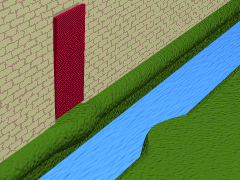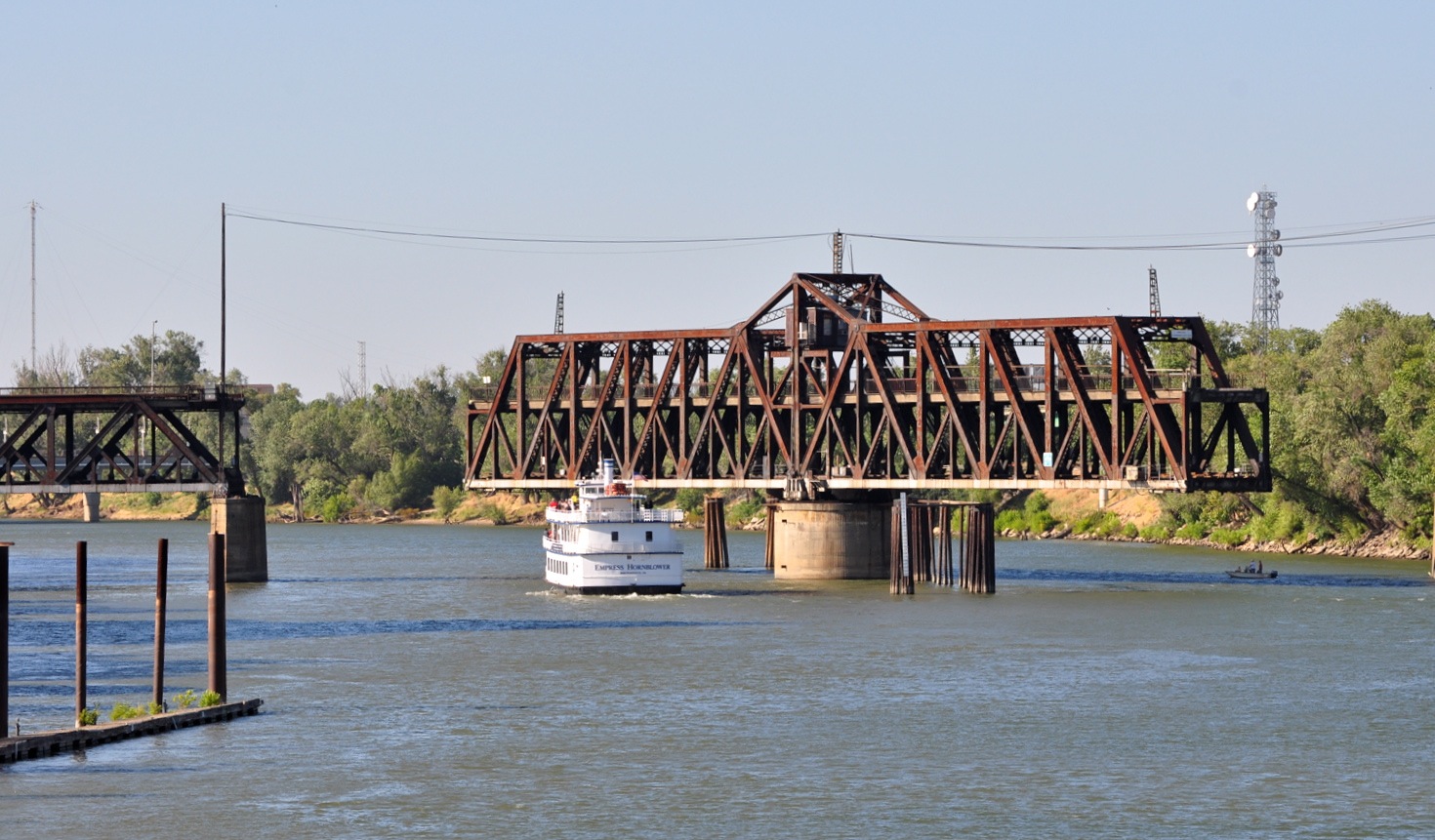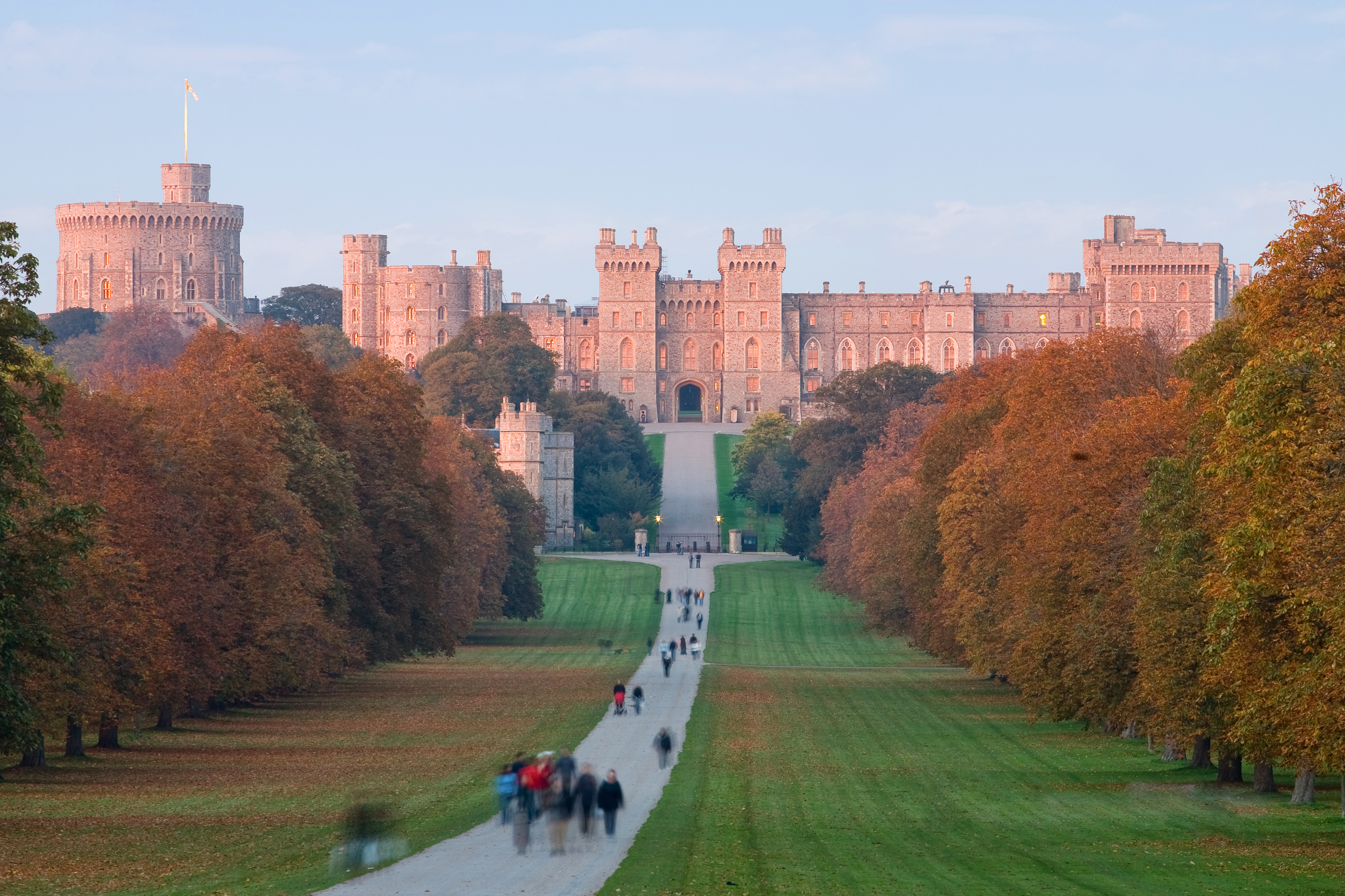|
Drawbridge
A drawbridge or draw-bridge is a type of moveable bridge typically at the entrance to a castle or tower surrounded by a moat. In some forms of English, including American English, the word ''drawbridge'' commonly refers to all types of moveable bridges, such as bascule bridges, vertical-lift bridges and swing bridges, but this article concerns the narrower historical definition where the bridge is used in a defensive structure. As used in castles or defensive structures, drawbridges provide access across defensive structures when lowered, but can quickly be raised from within to deny entry to an enemy force. Castle drawbridges Middle Ages, Medieval castles were usually defended by a ditch or moat, crossed by a wooden bridge. In early castles, the bridge might be designed to be destroyed or removed in the event of an attack, but drawbridges became very common. A typical arrangement would have the drawbridge immediately outside a gatehouse, consisting of a wooden Deck (bridge), ... [...More Info...] [...Related Items...] OR: [Wikipedia] [Google] [Baidu] [Amazon] |
Moveable Bridge
A moveable bridge, or movable bridge, is a bridge that moves to allow passage for boats or barges. In American English, the term is synonymous with , and the latter is the common term, but drawbridge can be limited to the narrower, historical definition used in some other forms of English, in which ''drawbridge'' refers to only a specific type of moveable bridge often found in castles. An advantage of making bridges moveable is the lower cost, due to the absence of high piers and long approaches. The principal disadvantage is that the traffic on the bridge must be halted when it is opened for passage of traffic on the waterway. For seldom-used railroad bridges over busy channels, the bridge may be left open and then closed for train passages. For small bridges, bridge movement may be enabled without the need for an engine. Some bridges are operated by the users, especially those with a boat, others by a bridgeman (or bridge tender); a few are remotely controlled using video-c ... [...More Info...] [...Related Items...] OR: [Wikipedia] [Google] [Baidu] [Amazon] |
Drawbridge Mentality
Drawbridge mentality, also known as fortress mentality is a Conservatism, conservative and Opposition to immigration, anti-immigrant attitude of prior Immigration, immigrants in an established community. Drawbridge mentality can encompass denying immigration to people, businesses and also denying building developments which could facilitate immigration, such as affordable housing. The conflict of drawbridge mentality often emerges between city councils which wish to expand, and residents concerned about losing property value or other economic or political assets. It is often unclear whether the intention of certain policies is to achieve a drawbridge mentality, or if the policies have other economic or political goals. For example, Impact fee, impact fees reduce immigration by raising entry costs, but can also be argued to offset lowering property taxes. The drawbridge mentality can allow governments or communities to avoid providing humanitarian aid to immigrants by denying respo ... [...More Info...] [...Related Items...] OR: [Wikipedia] [Google] [Baidu] [Amazon] |
Double-beam Drawbridge
A double-beam drawbridge, seesaw or folding bridge is a movable bridge . It opens by rotation about a horizontal axis parallel to the water. Historically, the double-beam drawbridge has emerged from the drawbridge. A (double-beam) drawbridge has counterweights, so that operating requires less energy compared with such a bridge without counterweights. As a bascule bridge, the (double-beam) drawbridge has multiple hinges. The road surface is connected to the bottom hinge close to street level. Above the hinge is a portal. A rotating arm, the balance, is attached to the portal high up off the ground. On one side of the balance hangs the counterweight, the balance box, on the other side, the arm is hinged to two vertical beams that are on the other end hinged to the tip of the bridge deck. So when the bridge goes up, the balance and the bridge deck turn approximately parallel. The movement of the combined beams have the characteristics of a four-bar linkage. The drawback of a tr ... [...More Info...] [...Related Items...] OR: [Wikipedia] [Google] [Baidu] [Amazon] |
Linkspan
A linkspan or link-span is a type of drawbridge used mainly in the operation of moving vehicles on and off a roll-on/roll-off (RO-RO) vessel or ferry, particularly to allow for tidal changes in water level. Linkspans are usually found at ferry terminals where a vessel uses a combination of ramps either at the stern, bow or side to load or unload cars, vans, trucks and buses onto the shore, or alternately at the stern and/or the bow to load or unload railroad cars. History The first linkspans appeared at the end of the 19th century when train ferries came into operation. Each rail ferry berth has to be specifically designed to make sure that it fitted one class of ship. In most of these vessels it was also possible to carry some road vehicles. By the mid 20th century with the rise of road transport, general purpose Ro Ro ferries started to come into service. Most could use the rail ferry berths but generally they were fitted with stern ramps that had the dual function of g ... [...More Info...] [...Related Items...] OR: [Wikipedia] [Google] [Baidu] [Amazon] |
Bascule Bridge
A bascule bridge (also referred to as a drawbridge or a lifting bridge) is a moveable bridge with a counterweight that continuously balances a span, or leaf, throughout its upward swing to provide clearance for boat traffic. It may be single- or double-leafed. The name comes from the French term for balance scale, which employs the same principle. Bascule bridges are the most common type of movable span because they open quickly and require relatively little energy to operate, while providing the possibility for unlimited vertical clearance for marine traffic. History Bascule bridges have been in use since ancient times, but until the adoption of steam power in the 1850s, very long, heavy spans could not be moved quickly enough for practical application. Types There are three types of bascule bridge and the counterweights to the span may be located above or below the bridge deck. The fixed-trunnion (sometimes a "Chicago" bascule) rotates around a large axle that raises ... [...More Info...] [...Related Items...] OR: [Wikipedia] [Google] [Baidu] [Amazon] |
Helmingham Hall
Helmingham Hall is a moated manor house in Helmingham, Suffolk, England. It was begun by John Tollemache in 1480 and has been owned by the Baron Tollemache, Tollemache family ever since. The house is built around a courtyard in typical late medieval/Tudor style. The house is Listed building#England and Wales, listed Grade I on the National Heritage List for England, and its park and formal gardens are also Grade I listed on the Register of Historic Parks and Gardens of special historic interest in England, Register of Historic Parks and Gardens. History The present Helmingham Hall may have been initially constructed in 1510 on the site of an earlier house called Creke Hall. The exterior was altered between 1745 and 1760, again in 1800 by John Nash (architect), John Nash, and in 1840. The original half-timber, half-timbered walls have been concealed by brick and tiles. The house is surrounded by a moat 60 feet wide, over which it is reached only by two working drawbridges, whic ... [...More Info...] [...Related Items...] OR: [Wikipedia] [Google] [Baidu] [Amazon] |
Château Du Plessis-Bourré
Château du Plessis-Bourré is a château in the Loire Valley in France, situated in the Commune in France, commune of Écuillé in the Maine-et-Loire department. Built in less than 5 years from 1468 to 1472 by Finance Minister Jean Bourré, the principal advisor to Louis XI of France, King Louis XI. The château has not been modified externally since its construction and still has a fully working drawbridge. It was classified as a Monument historique in 1931. Château du Plessis-Bourré was once owned by La Maison De Nuchèze. Jacques de Nuchèze the fourth child of Guillaume de Nuchèze IV Seigneur de Baudiment, des Francs, de Brain, de Chincé & de Batrisse died after 1486 and married Catherine des Francs whose parents were Louis des Francs, Seigneu ... [...More Info...] [...Related Items...] OR: [Wikipedia] [Google] [Baidu] [Amazon] |
Swing Bridge
A swing bridge (or swing span bridge) is a movable bridge that can be rotated horizontally around a vertical axis. It has as its primary structural support a vertical locating pin and support ring, usually at or near to its center of gravity, about which the swing span (turning span) can then pivot horizontally as shown in the animated illustration to the right. In its closed position, a swing bridge carrying a road or railway over a river or canal, for example, allows traffic to cross. When a water vessel needs to pass the bridge, road traffic is stopped (usually by traffic signals and barriers), and then motors rotate the bridge horizontally about its pivot point. The typical swing bridge will rotate approximately 90 degrees, or one-quarter turn; however, a bridge which intersects the navigation channel at an oblique angle may be built to rotate only 45 degrees, or one-eighth turn, in order to clear the channel. Small swing bridges as found over narrow canals may be pivo ... [...More Info...] [...Related Items...] OR: [Wikipedia] [Google] [Baidu] [Amazon] |
Castle
A castle is a type of fortification, fortified structure built during the Middle Ages predominantly by the nobility or royalty and by Military order (monastic society), military orders. Scholars usually consider a ''castle'' to be the private fortified house, fortified residence of a lord or noble. This is distinct from a mansion, palace, and villa, whose main purpose was exclusively for ''pleasance'' and are not primarily fortresses but may be fortified. Use of the term has varied over time and, sometimes, has also been applied to structures such as hill forts and 19th- and 20th-century homes built to resemble castles. Over the Middle Ages, when genuine castles were built, they took on a great many forms with many different features, although some, such as curtain wall (fortification), curtain walls, arrowslits, and portcullises, were commonplace. European-style castles originated in the 9th and 10th centuries after the fall of the Carolingian Empire, which resulted ... [...More Info...] [...Related Items...] OR: [Wikipedia] [Google] [Baidu] [Amazon] |
Gatehouse
A gatehouse is a type of fortified gateway, an entry control point building, enclosing or accompanying a gateway for a town, religious house, castle, manor house, or other fortification building of importance. Gatehouses are typically the most heavily armed section of a fortification, to compensate for being structurally the weakest and the most probable attack point by an enemy. There are numerous surviving examples in France, Austria, Germany, England and Japan. History Gatehouses made their first appearance in the early antiquity when it became necessary to protect the main entrance to a castle or town. Famous early examples of such gates are those such as the Ishtar Gate in Babylon. Over time, they evolved into very complicated structures with many lines of defence. The Romans began building fortified walls and structures throughout Europe such as the Aurelian Walls of Rome with gates such as Porta San Paolo and Porta Nigra from the ancient defenses of Trier in Germany. Str ... [...More Info...] [...Related Items...] OR: [Wikipedia] [Google] [Baidu] [Amazon] |






